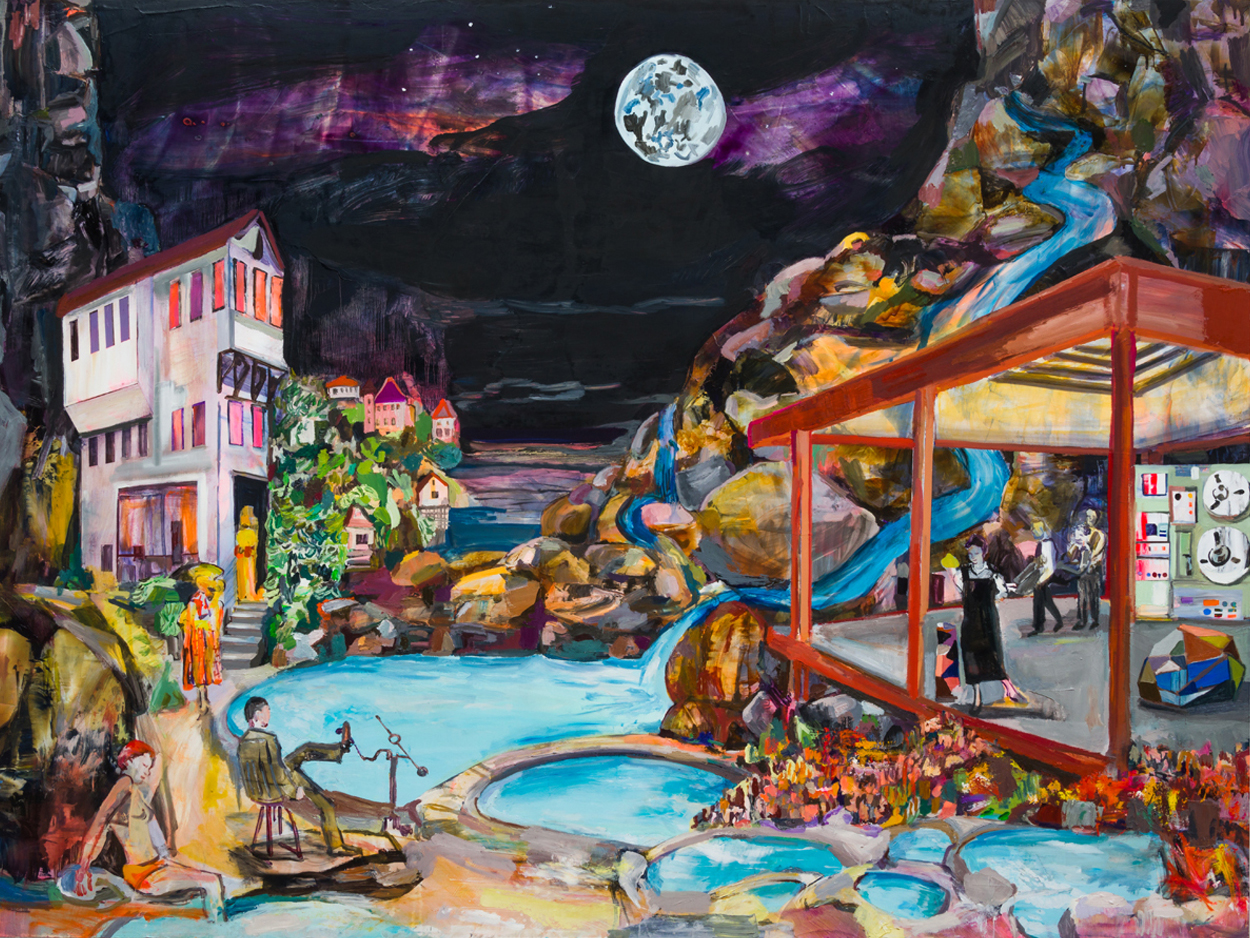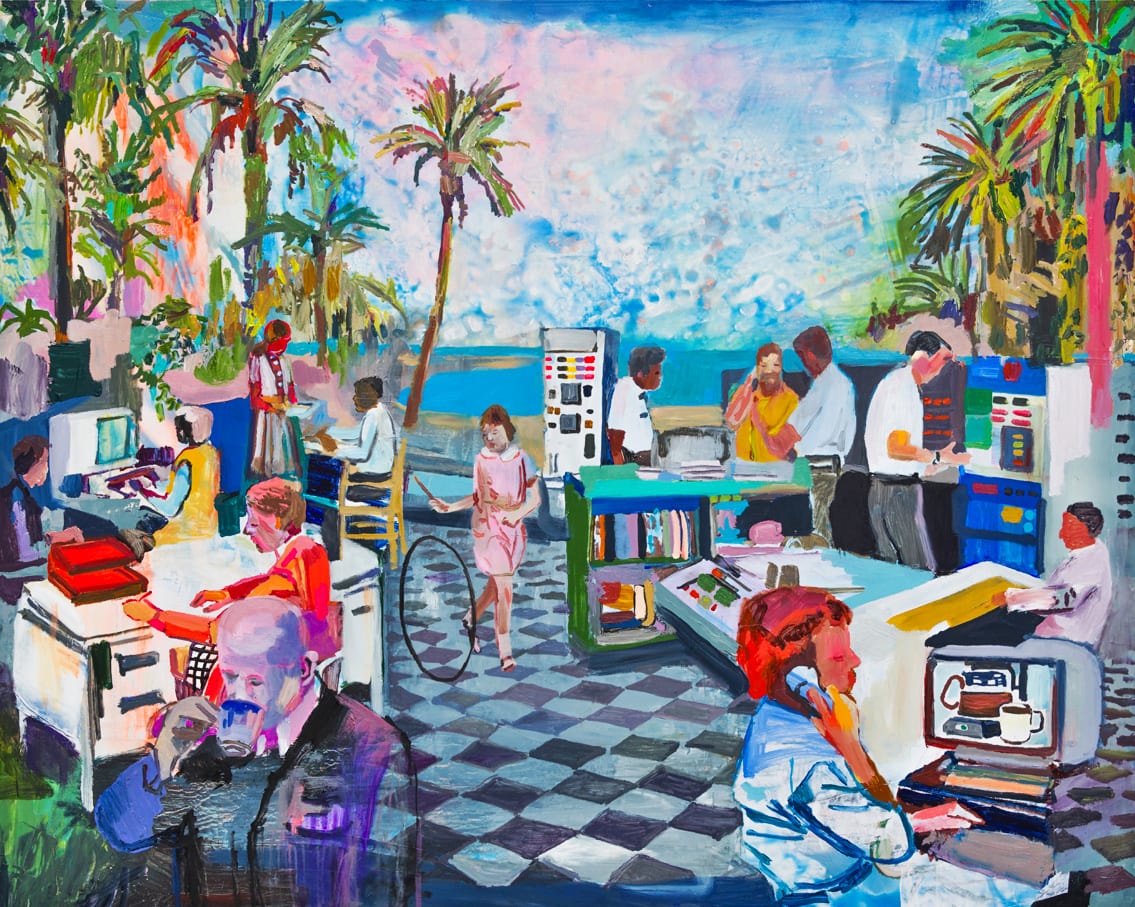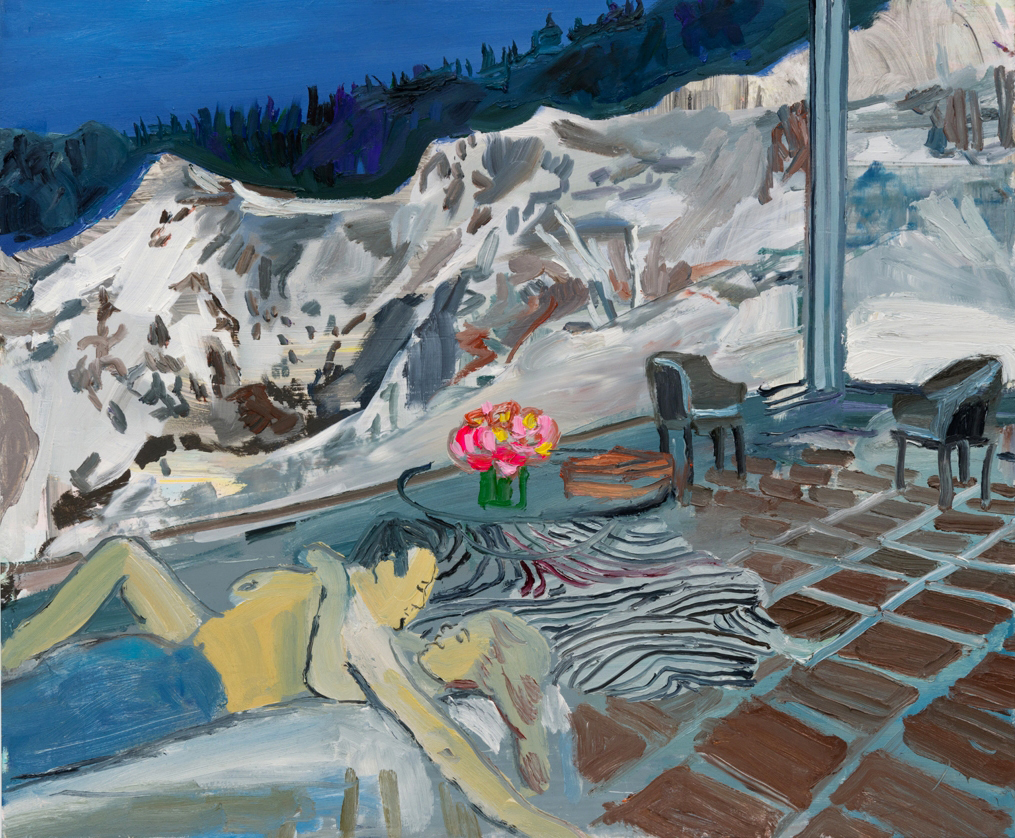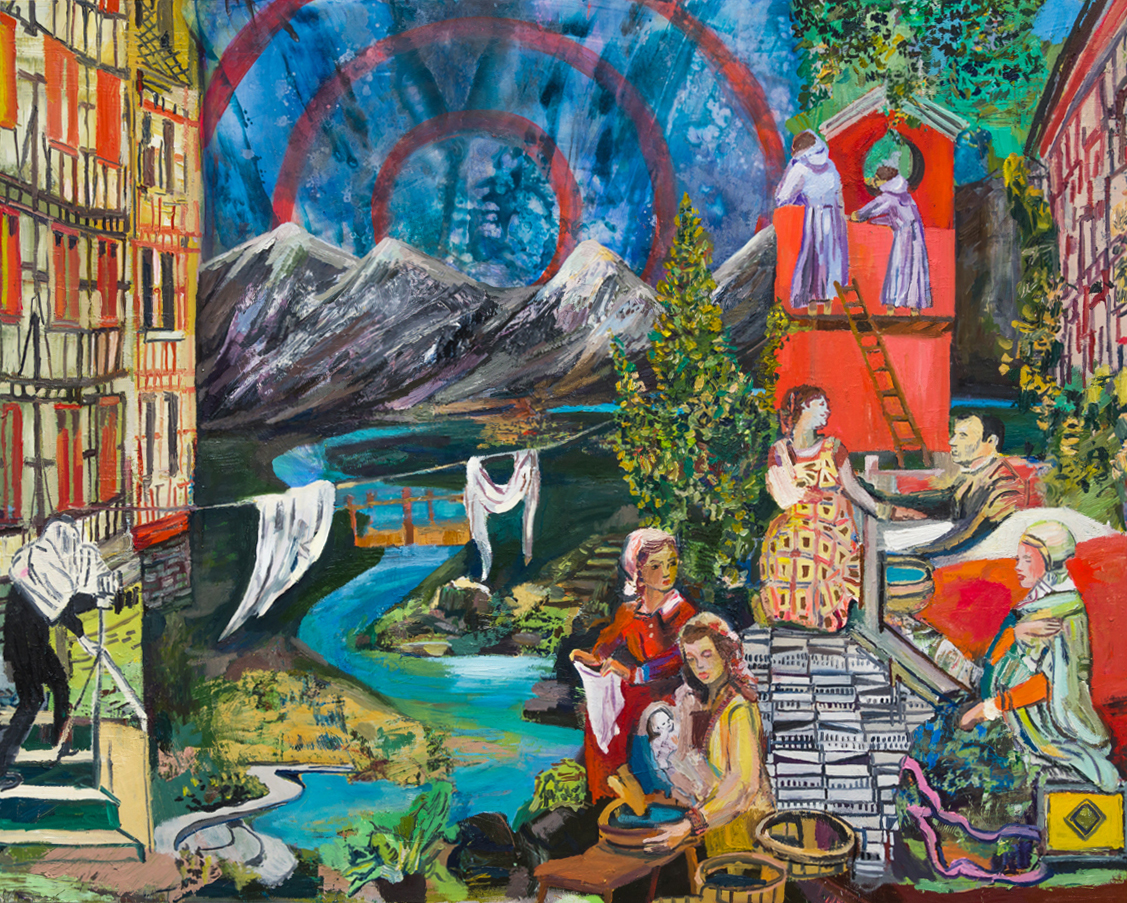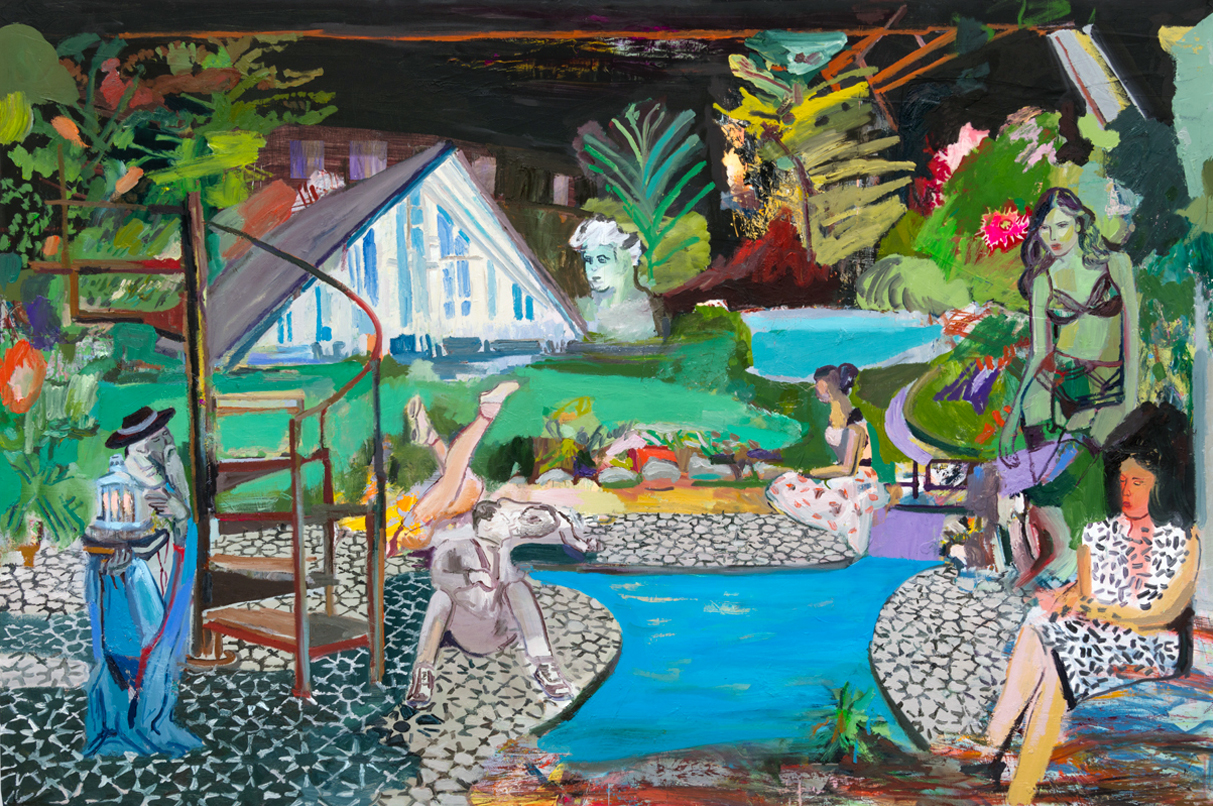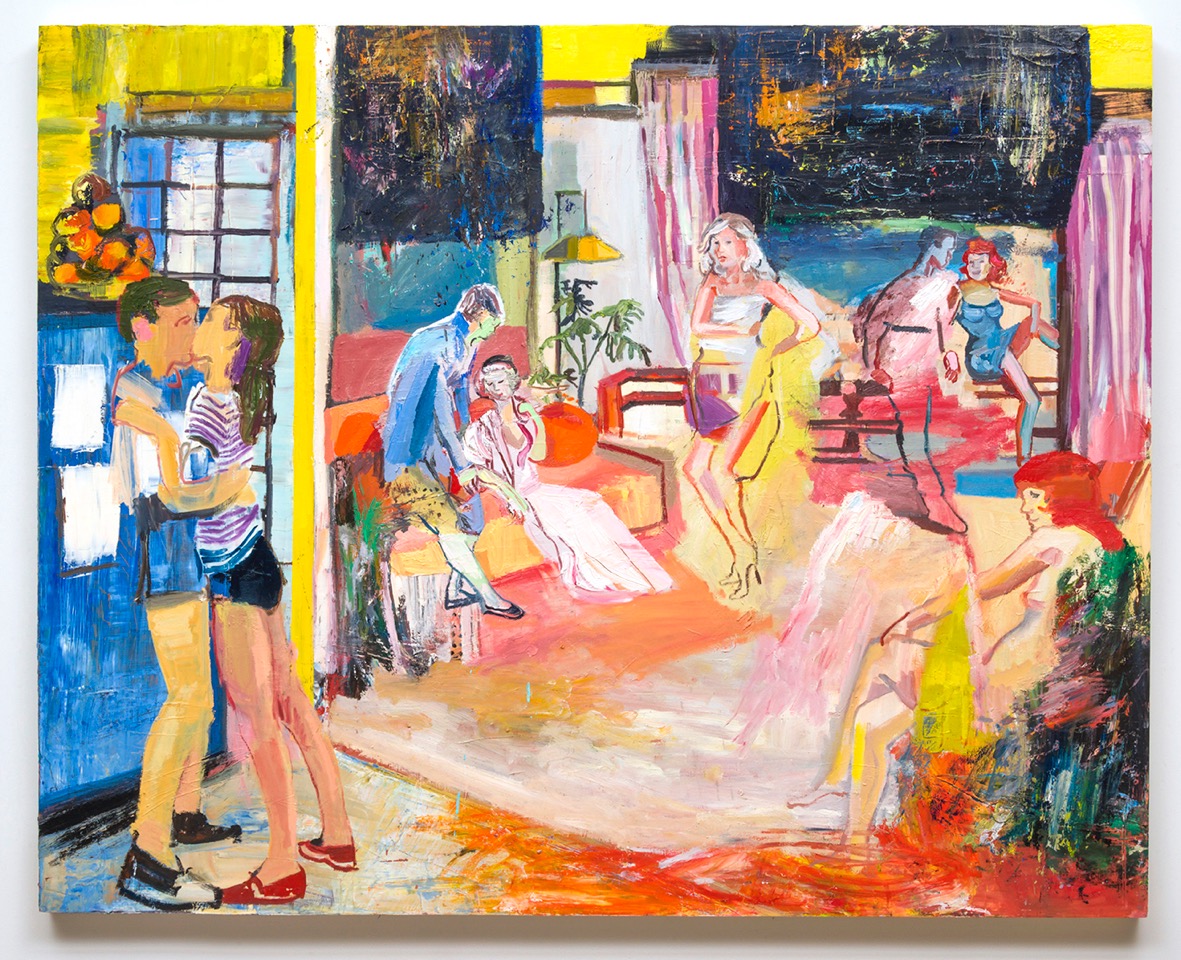Ladies Choice is an ongoing series highlighting female artists working in New York City and beyond. This series honors the power and ingenuity of women in the arts. Women have traditionally received much less exposure and recognition in the art industry. In their support of one another, these women stand as a testament to furthering the careers of female artists.
In our constantly forward moving, fast-pace world, moments of real connection are easily lost. Elizabeth Huey’s paintings aim to capture these intervals of human connection as well as allegories of healing. Huey’s paintings are portraits of the miraculous. She is driven to depict the inner motivations and external forces of the heroic. Huey lives and works in Los Angeles, CA.
You are part of a generation of female artists hustling and gaining recognition. What does being a part of a strong female community mean for you?
My first oil painting teacher told me “if you are a real painter, Art will be like a mad lover calling you back – no matter how many times you walk away.” In a sense, art has always hustled me. If I had a bumper sticker on my car it would read “I’d Rather Be Painting”. Thankfully, I have wonderful women in my life, in various professions, who I admire and reciprocate inspiration and support.
Which female artists, living or dead, inspire you most?
There are so many…. At the moment, some of my favorites include Anne Truitt’s journals and sculptures, Helen Levitt and Vivian Maier photographs, Rebecca Morris, Amy Sillman, Mamma Andersson, Jessica Jackson Hutchins, Mary Weatherford, Hilma af Klint, and always Louise Bourgeois.
Have you experienced firsthand the underrepresentation of female artists in the art industry?
Yes, of course, every history book reflects this disturbing reality. By painting portraits of profound women such as Ray Eames and Hildegard of Bingen, I’m doing my part to participate in the shift. And it goes without saying that there are also great and lesser-known men, such as Edgar Cayce, who were overlooked and shunned for exhibiting feminine attributes.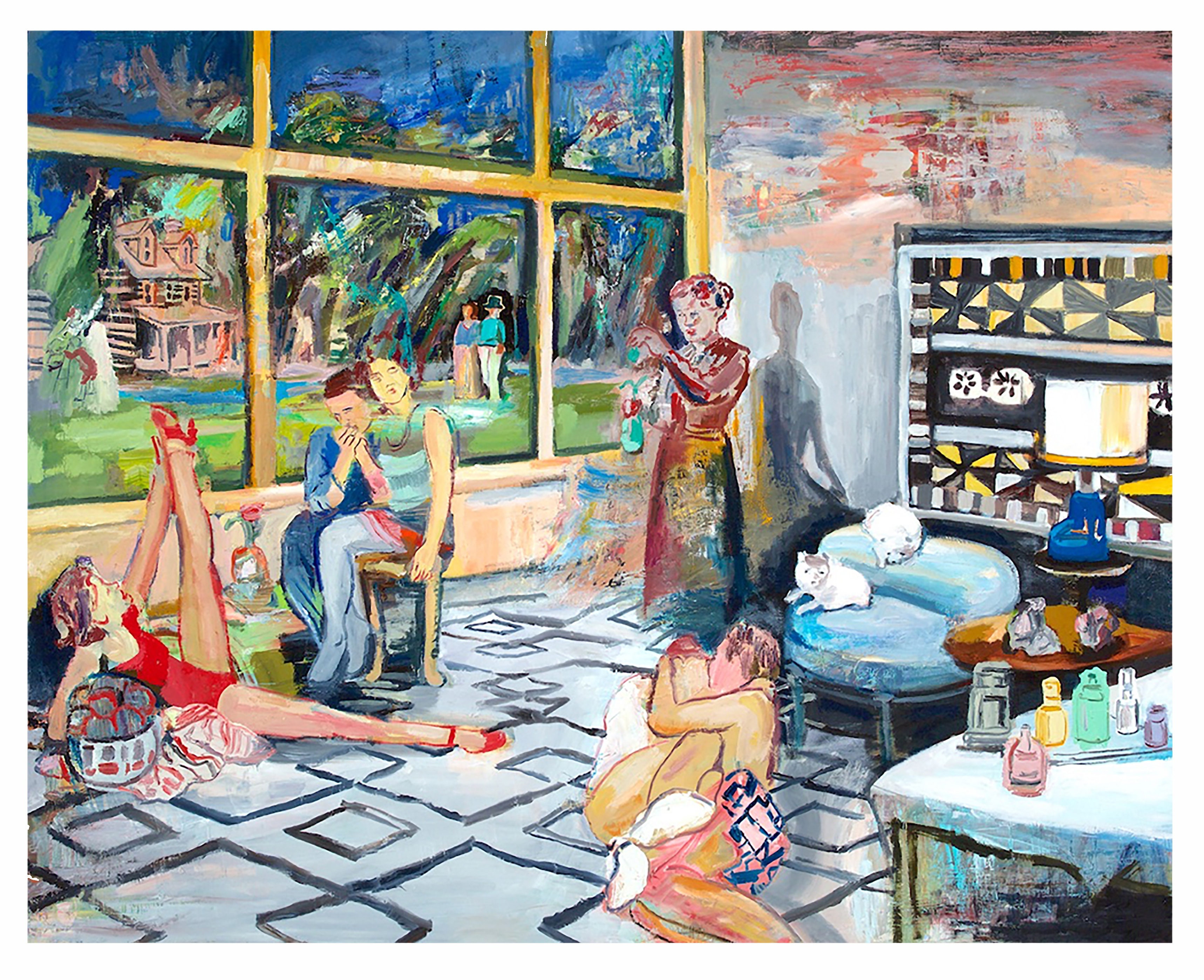
If you could change one thing about the current landscape for working female artists what would it be?
In a sense, what we women artists are up against is a narrow perspective on what we are capable of. Our culture has a dynamic, prismatic lens in which to experience it. We have all suffered from the failure to represent, honor and engage all differences in equal measure.
Your work explores human connection and healing. Why do you think this is important to explore in this moment?
There are few spaces today where one can vulnerably access emotions. Paintings offer that realm of introspection. We’ve become adept at looking through screens and windows on our devices, yet somehow it’s easy to remain disconnected. My paintings act as an open window to venture into the physicality of space. To take something flat and create movement, depth, and life is akin to resuscitating the dead. To feel is to heal.
Your paintings read as glimpses into fantastical worlds that draw from reality. Is it important for you to include realistic references to anchor the work?
While painting, I consider myself a translator. Although a painting is mute, it has a lot to say, encompassing both abstract forms and imagery. By depicting elements of a concrete space, the landscape becomes an invitation to both wander and wonder.
There are layers and depth to paintings, almost in a collage-like way. Can you speak about the various components that find home on the same canvas?
Collage has been key to my practice since the beginning. The human spirit is not trapped in a box of time and space, yet a painting must adhere to certain restrictions. Collage allows for the compression of marks and moments on a flat plane to create a dimensional world. The process of orchestrating parts into a totality is exhilarating. I work from my own intuitive drawings and photos. The system I use to cobble together parts into a whole is both conceptual and immersed in the physical process.
What is your process like? How do you begin a work?
I find inspiration through allegory and sifting through centuries, traveling in time to uncover special people and events. To me, it’s sort of a phenomenon when a subject appears. As a psychology major, it’s been an ongoing endeavor to explore the secretive and lesser-known aspects of history. Ultimately, painting is a conversation, and throughout its creation offers memories and prophecies.
What’s next for you? What are you excited about right now?
I’m in the midst of a large painting loosely depicting Helen Keller and Alexander Graham Bell. Few realize Bell’s own mother was deaf. He, in turn, met Keller and inspired her altruism. I’m captivated by the notion that trauma can lead to the miraculous.
At the end of every interview, we like to ask the artist to recommend a friend whose work you love for us to interview next. Who would you suggest?

